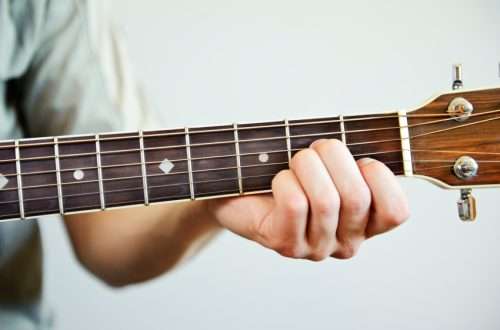
How to barre on the guitar. Tips and exercises for beginners.
Contents

The content of the article
- 1 Introductory information
- 2 What is barre?
- 2.1 small barre
- 2.2 big barre
- 3 How to take barre?
- 4 Hand position
- 5 Fatigue and pain when taking a barre
- 6 Practicing barre on the guitar
- 7 10 tips for beginners
- 8 Barre Chord Examples for Beginners
- 8.1 Chords C (C, Cm, C7, Cm7)
- 8.2 D chords (D, Dm, D7, Dm7)
- 8.3 Mi chords (E, Em, E7)
- 8.4 Chord F (F, Fm, F7, Fm7)
- 8.5 Chords Sol (G, Gm, G7, Gm7)
- 8.6 A chords (A, Am, A7, Am7)
- 8.7 C Chords (B, Bm, B7, Bm7)
Introductory information
Barre is one of the biggest stumbling blocks that every aspiring guitarist faces. It was just starting to work out this technique that many musicians gave up guitar lessons and, perhaps, moved on to something else, or even quit music altogether. Nevertheless, the barre is one of the most important techniques that will be needed sooner or later when playing both acoustic and electric guitars.
What is barre?
This is a technique, the principle of which is to simultaneously clamp all or several strings on one fret. What is it for, and why is it so important to master it?
At first, some chords are simply impossible to play without using the barre – they simply will not sound. And if, for example, F, you can still take it without it – although it will not be exactly F, then the triads Hm, H, Cm, without simultaneously clamping on one fret, cannot be taken.
Secondly – all guitar triads on the guitar can be taken in several ways. Let’s say classic chord for beginners Am on the guitar can be played both on the first three frets, and on the fifth, sixth and seventh – you just need to barre on the fifth fret and hold the fifth and fourth string on the seventh. And so with all existing major and minor chords. The position in which they are taken is determined solely by the desired sound and common sense – well, why run your hand along the fretboard and take, say, Dm in the classical way, if after Am on the fifth fret you can simply put your fingers down one string and hold the second on the sixth fret?
In this way, barre technique worth mastering in order to expand your repertoire as well as your composing possibilities – and thus play and compose more diverse music.
small barre
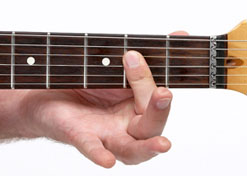
big barre
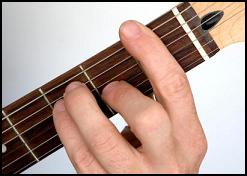
How to take barre?
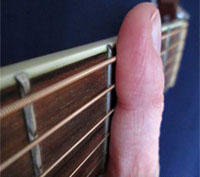
The small type of reception is done in exactly the same way – the difference is that not all strings are clamped at once, but only a few – the first three, for example, an F chord with a small barre.
Hand position
When taking a barre, the hands should occupy the same position as in a normal game. At the same time, it is important that the left hand be as relaxed as possible and make minimal tension during a normal and high-quality position. For convenience, it is worth watching the thumb – leaning on the back of the neck, it should share the entire position approximately in the middle.
The most important thing in practicing the barre technique is the purity of its sound – and this is what you need to pay attention to. When performing all exercises, make sure that all the strings sound clean and without unnecessary rattling.
Fatigue and pain when taking a barre
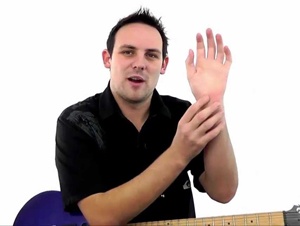
The main thing is not to quit classes when pain appears. Give your hand a rest, drink tea, have a snack – and return to practicing the technique. Even through the pain, try to clamp the strings with high quality. Sooner or later, you will feel that the muscles have begun to get used to the loads, and that now setting barre chords does not require as much strength as before. Over time, the speed of the permutation will also increase – just like when you first began to clamp the strings – because the fingers hurt and did not obey.
Practicing barre on the guitar
There are no special guitar exercises for practicing this way of taking chords. The only effective way to learn how to play is to learn various songs where this technique is actively used. For example, the songs of “Civil Defense” are perfect for this, or the song of the group Bi-2 “Compromise”, chords which contain a large amount of barre. Try to combine learning this technique, and some difficult fight – for example, battle eight. This will greatly develop your coordination and allow you to play any chords with any rhythmic pattern.
10 tips for beginners

- Patience and hard work is the key to excellence. Don’t think that a good clamp will come right away. Practice as much as you can, learn the songs, and watch how the strings sound. It will take a long time, but the result is really worth it.
- Follow your index finger. It should be strictly in the vertical plane, and it definitely does not need to be placed diagonally. Try also to place it closer to the fret, but not on it – it will be much easier to get the desired sound.
- Calculate your strength. Although you need to push as hard as possible, you still need to calculate the forces. Too much pressure will cause the sound to float and change, and too little will cause the strings to rattle.
- Don’t be weak. Main character barre guitar for beginners severe pain in the thumb and muscles. However, this is actually completely normal. Be patient and play, give your hand a little rest – and start again.
- The strings should not rattle. Once again, watch your index finger, you want it to evenly press all the elements of the chord.
- Get into the habit of always playing with the barre. As mentioned above, any chord on the guitar can be played in many ways. Take any song, and find the same triads on the fretboard, but when taking which you need to use the simultaneous clamping of the strings. Swap them for non-barre chords and learn the song in that format. This will be the best practice for this technique.
- Share practice. The global goal is to work out clamping, it will become easier if you divide it into several small processes. Practice those chords that you get, and then move on to new ones. This way things will go much faster.
- Train your brush. Take the expander and do the exercises on it. It sounds strange, but it is very effective – this way you will prepare the muscles for the required loads.
- Take chords up the fretboard. In different places on the fretboard, the strings are pressed with different force. For example, on the fifth fret and above, it is easier to do this than on the first three. If the barre is not set at all, try starting there.
- Adjust the height of the strings. Although this is the last tip from the list, it is not the last in importance. Take a look at your neck from above – and check the distance from the strings to the nut itself. It should be small – from five millimeters on the fifth and seventh fret. If it is more, then the bar must be loosened. You can do this with a guitar maker. If you do not do this, then the barre will be given much more difficult than usual.
Barre Chord Examples for Beginners
Below are a few classical barre chord charts that you can use to learn how to play it.
Chords C (C, Cm, C7, Cm7)




D chords (D, Dm, D7, Dm7)




Mi chords (E, Em, E7)



Chord F (F, Fm, F7, Fm7)




Chords Sol (G, Gm, G7, Gm7)




A chords (A, Am, A7, Am7)




C Chords (B, Bm, B7, Bm7)







